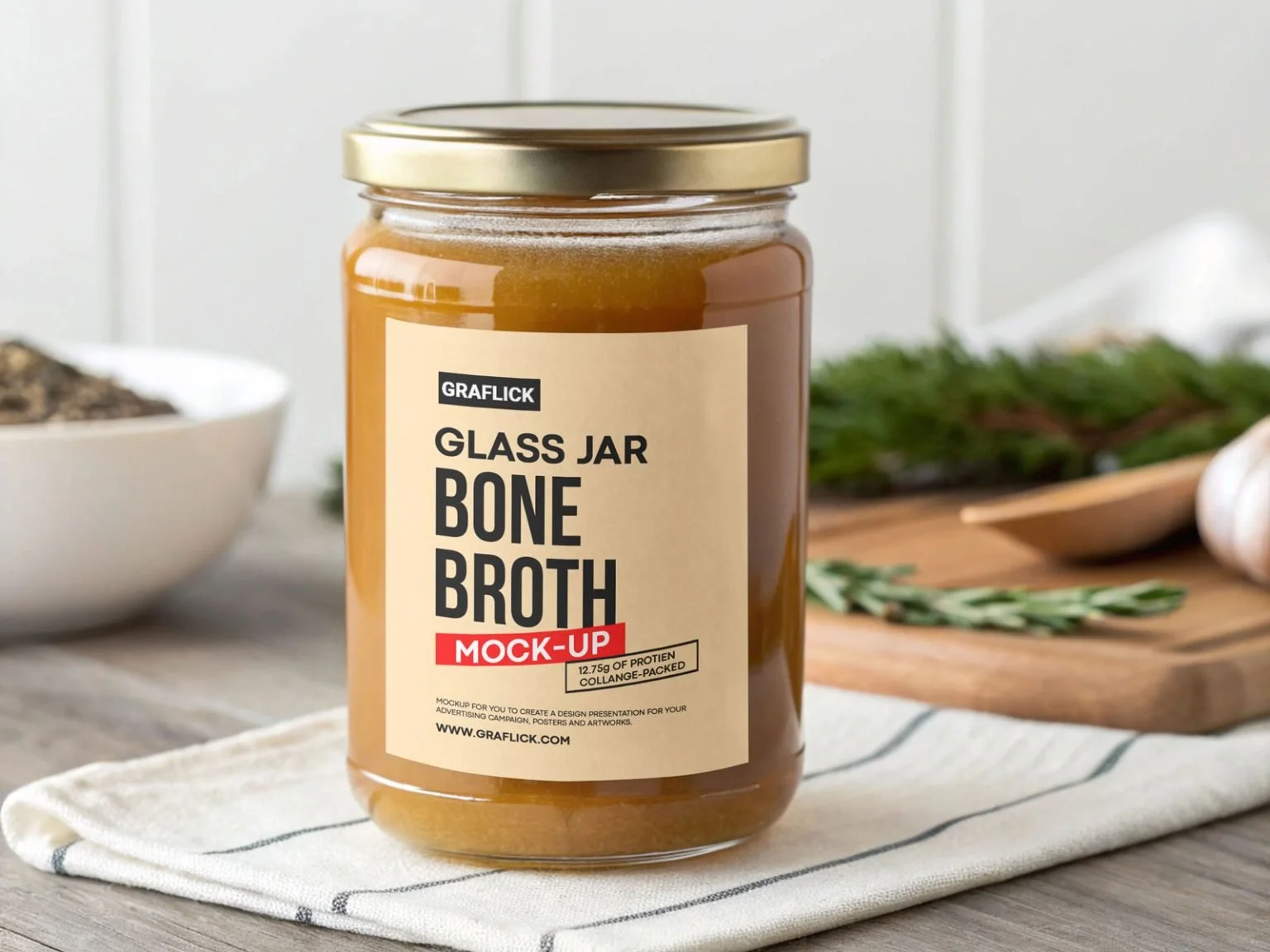Not All Broth Is Created Equal — But Maybe It Is…
Ever wandered down the grocery aisle wondering what the real difference is between broth and stock? One says it's "for sipping," and another says it's "chef-style." But would you actually taste the difference if you put both in a pot?
Let’s be real — when it comes to commercial broth and stock, the line between them is paper thin.
🍗 Broth vs. Stock: What They Used to Mean
Traditionally, there was a clear difference:
- Broth was made with meat and vegetables, simmered briefly, and seasoned with salt. It was light, flavorful, and ready to sip on.
- Stock was made from bones, often roasted first, and simmered for hours to pull out gelatin and minerals. It was thicker, richer, and meant as a base for sauces and soups.
If you’ve ever made homemade chicken soup or a silky reduction sauce, you know the difference. Broth is for eating; stock is for building flavor.
But walk into a modern food plant, and things look very different.
🏭 Inside the Factory: Same Vat, Different Label
In large-scale food production, broth and stock often start from the exact same batch. The same stainless-steel kettle filled with chicken bones, water, and aromatics might end up as both “chicken broth” and “chicken stock.”
Here’s the trick:
- The broth version gets seasoning — salt, herbs, maybe a touch of yeast extract for umami.
- The stock version stays neutral, so chefs and home cooks can season it themselves.
That’s it. Same base, two labels.
🧪 The Science of Consistency
Why? Because consistency sells. A company can’t afford one carton tasting different from another. So instead of hand-simmering the nuances, they rely on controlled extraction, flavor concentrates, and precise salt levels to hit the same note every time.
This means most “broths” and “stocks” on shelves are variations of a single master recipe, tweaked slightly for taste or marketing language.
🏢 Who’s Making It All?
You might think there are dozens of competing broth brands out there — but most are owned by a handful of parent companies:
- Campbell Soup Company → Swanson and Pacific Foods (both make broth, stock, and bone broth)
- General Mills → Progresso, which uses similar bases for soups and broths
- Unilever (Knorr) → one of the world’s largest producers of liquid and powdered stock for both consumers and restaurants
- Nestlé (Maggi, Minor’s) → dominates the global “base” and bouillon market
- McCormick → owns Kitchen Basics, which sells both broth and stock — often identical except for salt content
Even private-label products like Trader Joe’s, Whole Foods 365, or Kirkland Signature are often co-packaged by these same companies.
So when you grab a “low-sodium organic stock,” it might just be the “low-sodium organic broth” from the same factory in different clothes.
🧃 Bone Broth: The Marketing Comeback
Enter bone broth — the “wellness” twist that took off in the 2010s. It’s essentially old-school stock with new branding and a collagen halo.
Companies like Kettle & Fire and Brodo slow-simmer real bones for 12–24 hours, bottle it up, and market it as a daily health tonic.
Ironically, bone broth is the most traditional of all — the kind your grandmother made before stocks went corporate.
🧠 The Takeaway
Here’s the honest truth:
In commercial production, broth and stock are nearly identical. The difference lies in seasoning, labeling, and marketing, not the process or ingredients.
Homemade stock will always have that jiggly collagen and deep aroma that store-bought versions can’t replicate. But if you’re grabbing a carton off the shelf, don’t stress about which word it uses — your soup won’t know the difference.
💡 Pro Tip from FoodTokTV
If you want true stock flavor from store-bought broth, try this:
- Simmer it for 30 minutes with a few chicken bones or wings.
- Add an onion, carrot, celery stick, and bay leaf.
- Let it cool — you’ll see the difference when it gels in the fridge.
Homemade texture, grocery-store convenience. That’s the best of both worlds.
🧂 What About Better Than Bouillon?
You’ve probably seen those little jars sitting near the broth cartons — Better Than Bouillon is one of them. It’s not really a broth or a stock; it’s a concentrated flavor base made from cooked meat or vegetables, blended with salt, yeast extract, and flavor enhancers.
Think of it as the espresso shot of broth — powerful, convenient, and shelf-friendly.
⚗️ How It’s Different
- Form: It’s a paste, not a liquid.
- Made by: Cooking and concentrating ingredients, not long simmering.
- Flavor: Intense, salty, and umami-rich — meant to be diluted in hot water.
- Use Case: Perfect for quick sauces, gravies, and stir-fries when you need fast flavor.
Unlike carton broth or stock, Better Than Bouillon isn’t something you’d sip straight. It’s designed to mimic the taste of slow-simmered stock instantly — no bones or long cook times required.
In short: Better Than Bouillon is the instant coffee of broth — fast, bold, and convenient, but missing the slow-simmered depth of a true stock.
💡 FoodTokTV Tip
Want a cleaner version at home? Make your own base:
- Simmer leftover bones, meat, and veggies until you have a rich stock.
- Reduce it until syrupy and thick.
- Blend, season lightly with salt, and refrigerate in a small jar.
Voilà — your own “Better Than Bouillon,” no additives required. A spoonful brings instant umami to soups, sauces, or even sautéed veggies.


